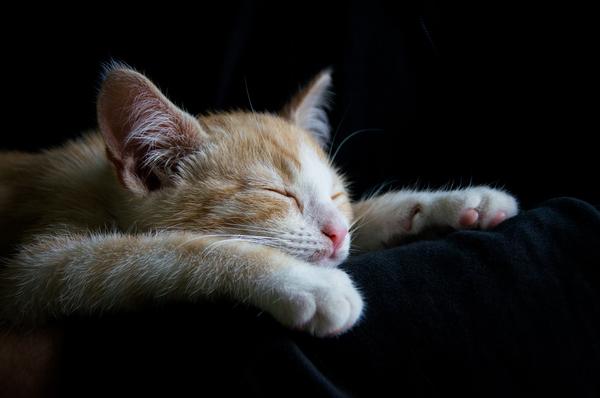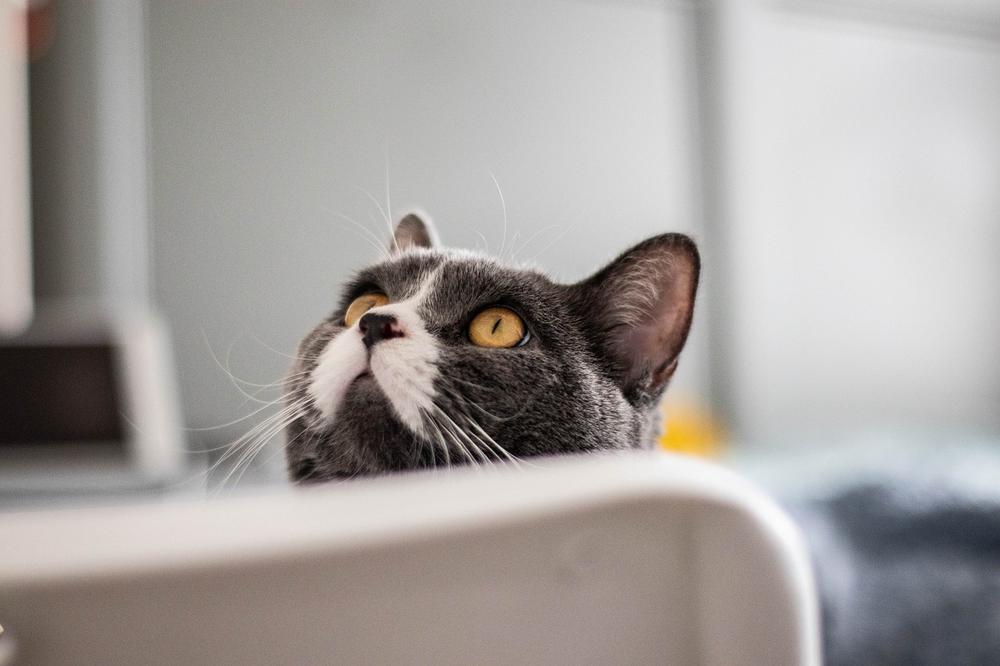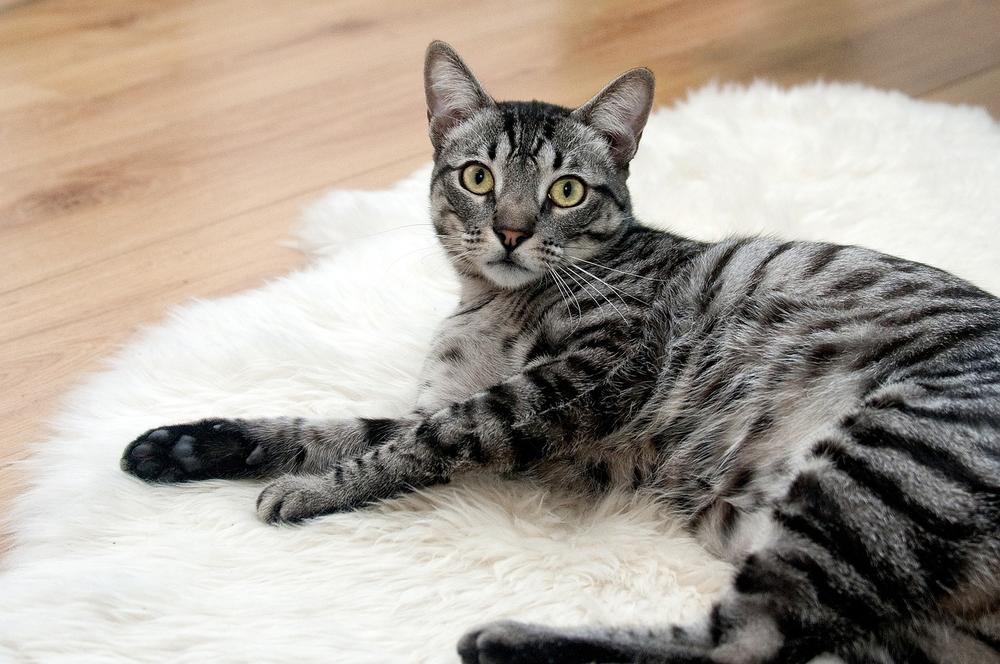Your Cat Won't Groom Herself: This is How You Can Manage the Situation

So you want to understand why your cat is not grooming herself...
I feel ya.
When we see our feline friends neglecting their grooming routine, it's natural to worry.
We want to keep them healthy and happy, and grooming plays a big part in that. 😺
But let's be real for a minute.
It can be frustrating, right?
You've tried everything, from brushing her fur to buying her fancy grooming tools, but she just won't do it.
It's like she's giving you the cold shoulder.
Well, don't despair just yet.
In today's guide, I've got your back.
I'll reveal the possible reasons behind your cat's lack of grooming and give you practical tips to help her get back on track.
Trust me, your cat's well-being is worth it.
So, let's dive in and get your little furball looking fabulous again!
Behavioral Issues Impacting Cat Grooming
Cats and grooming can be a real headache for you. 😿
Here are a few reasons why your cat might stop grooming themselves:
- Stress or anxiety is one of the main culprits for neglected fur.
- Moving to a new place or fights with family members can mess up their grooming routine.
- Having other animals around can stress them out, messing with their grooming habits too.
- If their lifestyle or routine changes suddenly, they might forget how to take care of themselves.
- Introducing new pets or people can make your feline friend feel uneasy and disrupt their grooming routine.
- Health issues can also mess with your cat's groom time, so don't ignore any physical problems they might have.
- Mama cat not being around during their early days can affect how they groom themselves later in life.
- Even the environment can play a role in causing grooming problems.
You have to spot these behavioral issues and do what it takes to reduce stress, keep a stable home, and get medical help if necessary.

Your cat's grooming habits are a reflection of their in essence well-being.
So, watch closely for any changes and lend a paw when needed to maintain their good grooming practices.
Main points I'll expand upon further down this article:
- Senior cats may groom less or stop completely due to special needs.
- Changes in habits like increased sleeping or eating less can indicate illness.
- Gum disease can make grooming uncomfortable and lead to decreased grooming.
- Reduced grooming is a sign that something could be wrong with the cat.
- Treatment may include antibiotics or symptom management for grooming issues.
- Increased oil production can cause mats in short-haired cats.
- Common diseases like kidney disease and diabetes can decrease grooming.
- Monitor grooming habits and seek veterinary advice if issues arise.
- Regular vet check-ups and blood work are important for older cats.
- Inquire with your vet for proper grooming methods and products.
And it gets worse...
Neglected grooming can lead to a slew of health issues for your furry friend.
Let's delve into the potential consequences of inadequate grooming and how you can help maintain your cat's wellbeing...
Signs of a Grooming Problem
If your cat has mats or tangles in their fur, it means they have grooming problems.
By brushing them regularly, you can prevent matting and catch any abnormalities in their coat early on.
But here's the thing - senior cats are more likely to have grooming issues. 👴
These older kitties might clean themselves less often or even stop altogether.
This can lead to unpleasant smells and tangled hair.
So, pay attention to any changes in their grooming habits. If they show less interest in self-grooming, sleep more than usual, or eat less, there may be underlying health problems.
Gum disease is also a concern for grooming. Cats with cavities and stinky breath tend to groom less or not at all.
Usually, cats are very meticulous when it comes to grooming.
So if there's a decrease or complete halt in their grooming routine, it could mean they're in pain or unwell.

The treatment may involve antibiotics for bacterial infections or managing symptoms of other conditions.
Even short-haired cats can experience mats because their skin produces more oil.
Furthermore, common diseases like kidney disease, thyroid disorders, and diabetes can contribute to decreased grooming behavior.
That's why you have to keep an eye out for these signs!
Furthermore, I know how important it is for you to take care of your feline friend, especially when it comes to their grooming habits.
That's why I highly recommend checking out Do Cats Shed More When Stressed Scared.
In this guide, I delve into the topic of whether cats shed more when they're feeling stressed or scared.
It's an article that will provide you with valuable insights and tips on when to be concerned about your cat's shedding.
Trust me, it's a must-read for any proactive cat owner.
When Should I Be Concerned About My Cat's Grooming Habits?
If you're worried about how your cat takes care of itself, here are 10 signs to look out for:
- If they suddenly stop or do less grooming.
- When their fur starts looking or feeling different than before.
- If they develop mats or tangles that weren't there previously.
- When they have irritated skin and scratch excessively.
- If their skin becomes dry, flaky, or has dandruff.
- When they have bald patches or lose more hair than usual.
- If a foul smell comes from their fur.
- When they seem tired, sluggish, or lack energy.
- If they start eating less or losing weight.
- When grooming causes them pain or they have difficulty moving.
You should keep an eye on how your cat grooms itself and get advice from a vet if you notice any worrisome behaviors.
You have to take quick action if your cat completely stops grooming or finds it challenging.
Regular check-ups and blood tests, particularly for older cats, can help uncover any underlying health issues that might affect their grooming habits. What's more, certain illnesses like diabetes or hyperthyroidism may increase the need for more frequent grooming to prevent tangling and other problems. 😺
Frequency of Cat Grooming
Shorthaired cats, like all creatures with shorter fur, demand less grooming compared to their longer-haired counterparts.
Generally, you should brush them only once or twice every seven days in order to get rid of loose strands and prevent hairballs from forming. How often you brush or bathe your feline companion should be carefully discussed with your veterinarian.
To guarantee that your cat remains clean and radiant, you need to locate the finest products available.
Remember, keeping your beloved four-legged friend tidy and in good health is a responsibility not to be taken lightly.
Ways to Assist in Cat Grooming
Why grooming is important for your cat
Grooming keeps your cat healthy and happy. It prevents mats, promotes hair growth, and helps restore their skin's natural oils.

Make grooming a regular part of your routine to take good care of your furry friend.
Key grooming practices for your cat
- Brushing: Regular brushing keeps your cat's coat clean and healthy. It also improves blood circulation and spreads natural oils in their fur. Plus, it's a great opportunity for you to bond with your feline companion.
- Nail trimming: Trimming your cat's nails regularly prevents discomfort and pain caused by overgrowth. Get a good pair of nail clippers designed specifically for cats and ensure not to cut too close to the quick.
- Ear cleaning: Use a cat-specific ear cleaner to remove buildup and prevent infections or ear mites. Check your cat's ears often for any redness, discharge, or strange odor. If you notice anything unusual, consult your veterinarian for advice.
Special considerations for cats with mobility issues
If your older cat has trouble moving around due to arthritis or other mobility issues, provide them with elevated grooming areas like ramps or steps. These will lead to comfortable surfaces within their reach.
Additionally, you should have professionals assess any mats to avoid injuries from improper technique or close trimming. Remember to prioritize your cat's comfort and safety throughout their grooming sessions.
And that wraps up today's article.
I'm so glad you made it to the end of my blog post! I'm really curious to know what you thought about it. I work really hard to make my blog posts as helpful and informative as possible, which definitely means a lot of time and effort goes into them (but in a good way!). If you could take a moment to click on any of the social sharing icons to share this post with others, I would be incredibly grateful. Thanks a bunch!
Talk soon,
-Sarah Davis